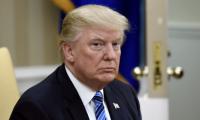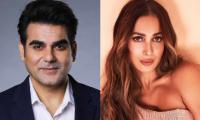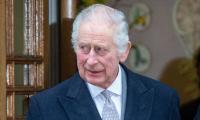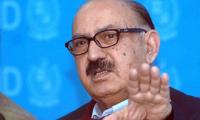SIDE-EFFECT
(Part II)
Last week, I ended with sharing not just my feeling of shock and dismay at the decline we have observed in religious studies and theological development over the past five decades but also expressing the irony of it all as our society is so overtly religious and apparently faith-driven.
Let me come to physical and life sciences now. If I may be allowed to say that there was never a rise for us – South Asian Muslims – in the scholarship of disciplines like physics, chemistry, biology and their subsequent branches which run in hundreds. So what to speak about the fall? However, there were some possibilities that had opened up with the ideas and initiatives of people like Sir Syed Ahmed Khan. Sir Syed, the committed social reformer and ardent educationist, was perhaps the first to realise the importance of teaching sciences to Muslim students in addition to other traditional subjects. He also stressed the need for an overall modern and rational education. In 1862, he had founded a translation society that evolved into the Scientific Society of Aligarh in 1864. The objective was to introduce and promote scientific knowledge gained by western countries among local population, primarily Muslims of the subcontinent. The Society had a large library and a reading room. As early as in 1866, it subscribed to 44 scientific journals and magazines in English and other languages including Persian and Arabic.
Directly or indirectly, under the influence of Sir Syed’s Aligarh movement many such initiatives were taken across the subcontinent by various people. He and his companions had faced great resistance and extremely hostile circumstances to work within. But not only they survived that pressure from obscurantists and orthodox individuals and organised groups, they successfully sowed the seeds of modern knowledge and scientific thinking among the Muslims of South Asia. Sir Syed helped shape the possibility of a rational and enlightened South Asian Muslim mind. From raising questions that fall within the domains of belief and jurisprudence to articulating his thoughts about language and literature to emphasising the need for gaining knowledge of physical and natural sciences to encouraging Muslims to participate in politics and governance, Sir Syed’s interventions were broad and effective.
MAO College, established by Sir Syed, that later became Aligarh Muslim University precedes both Jamia Millia Islamia (originally set up in Aligarh but then soon moved to Delhi) and Osmania University, Hyderabad Deccan, which are the other two significant institutions established by Muslims in South Asia. Osmania University had the unique distinction of teaching all subjects including mathematics and physical sciences at graduate and postgraduate levels in Urdu. The translation, compilation and editing departments of the University were considered at par with any such university departments anywhere.
In what is now Pakistan and Bangladesh, most major institutions we inherited were established by the British rulers or Hindu and Parsi philanthropists. There were some schools and colleges established by Muslims like Sindh Madrassah in Karachi and Islamia College in Peshawar but there was no university or a post-graduate learning institution developed by Muslims. However, the impact of Sir Syed’s movement made people study in modern educational institutions established by the government or philanthropists in their areas.
But rather than producing scientists and scientific thinking, as Sir Syed intended and encouraged, what happened in the last fifty years is a definite downfall in inquisitive and rational thinking and possibilities of learning and innovation. Today, we are producing doctors, engineers, information technologists and industrial managers in the name of scientific education. Frankly they all remain superlative technicians – plumbers and electricians with advanced skill level in design and application – if they do not possess a scientific mind. A mind that questions, challenges, seeks, modifies, innovates and creates.
We are far away from producing a critical mass of physicists, chemists, biologists and theoretical scientists in different disciplines. Partly it has to do with the economic compulsions of people in an underdeveloped economy. But didn’t Dr Abdus Salam or Dr Salim-uz-Zaman Siddiqui faced the same compulsions in their times? Therefore, it has more to do with the relinquishing of any desire on our part as people to make an honest effort to analyse the complexities of life and existence, understand the problems they pose and the quest for seeking solutions. Again, exceptions are there to prove the rule – from the likes of ornithologist Salim Ali in India to physicist Raziuddin in Pakistan. But earth-shaking work doesn’t seem to appear from any quarter of South Asian Muslim societies.
Even for a sophomore, it is simple to understand that why we cannot produce scientists but still produce engineers or why we cannot produce biologists but produce doctors. There is near-complete absence of any importance attached to theory and scholarship in physical and life sciences among South Asian Muslims. How can you have a physicist or a chemist who is not trained and encouraged to questions the very basis of universally accepted physical laws of the times – leave alone matters of faith. This person can very well be religious in her personal life but if that constrains her spirit of inquiry, she will stop being a scientist. Likewise, if Darwin’s theory of evolution is refuted on the basis of an interpretation of a belief and not on the basis of proposing scientific argumentation in the general science or biology textbook taught to children, doctors will be born but evolutionary biologists won’t. I remember when in grade nine of the secondary school, the biology teacher told us that she will not give us lessons from the chapter titled, ‘Heredity’. Gen Zia was our president then and theory of evolution and related genetics could not be taught in public schools. She also assured us that there will be no question from the chapter in our exam. So we studied digestive, circulation and nervous systems of a frog – and humans by association. Hence, those of my class fellows who did well in biology are doctors, some really outstanding practitioners abroad. A few of them who couldn’t get a qualifying mark to enter the medical school are microbiologists working for diagnostic laboratories or in pharmaceutical industry.
Since there is little significant scholarship in theoretical mathematics, philosophy, physical and life sciences among South Asian Muslims, the limited scholarship in social sciences and humanities can also be understood. Historians like Irfan Habib, Ayesha Jalal and Dr Mushirul Hasan, development economists like Dr Mahboob-ul-Haq and Dr Rehman Sobhan, sociologists like Dr Hamza Alavi, language historians like Dr Tariq Rehman, intellectual historians and literary scholars like Dr Syed Nomanul Haq, and literary critics grounded in theory like Shamsur Rehman Faruqi, the whole list will also not make you turn the page twice.
In Pakistan, we lament that history is not even taught as a proper subject in our classrooms, leave alone whether it is distorted, propagandist or lopsided. But how many historians of merit do we find among Indian or Bangladeshi Muslims? Likewise, who have we produced as a sociologist since Alavi to understand our class composition and dynamics any better? And who have we produced after Haq to comprehend our economic plight and propose solutions?
In art and literature, there is no dearth of artistic expression and creative writing among South Asian Muslims. But those who can appreciate, criticise, theorise and explain what is happening in our art and literary scene are few and far between. Therefore, you will find a large number of people who have little clue of what is happening in the realm of art and literature making unfounded claims that nothing is being drawn, sculpted, painted and written. Perhaps there is no crisis of creativity but there is certainly a crisis of scholarship. (To be continued)
The writer is a poet and author based in Islamabad.
Email: harris.khalique@gmail.com
People stand in line up as election officials check their ballot papers during voting general election at a polling...
Women show their voter identity cards as they stand in a queue before casting their votes in Agartala. — PTIThe 18th...
Former prime minister Imran Khan. — Instagram/ imrankhan.ptiAn old saying has it that “when you dance with the...
Kashmiris in Indian illegally occupied Kashmir protesting against the Indian occupation as the forces of India looked...
A representational image showing residents walking at a wholesale market in Karachi. — AFP/FileOnce again there is...
A representational image showing late Pakistani human rights activist and Supreme Court lawyer Asma Jahangir. —...







